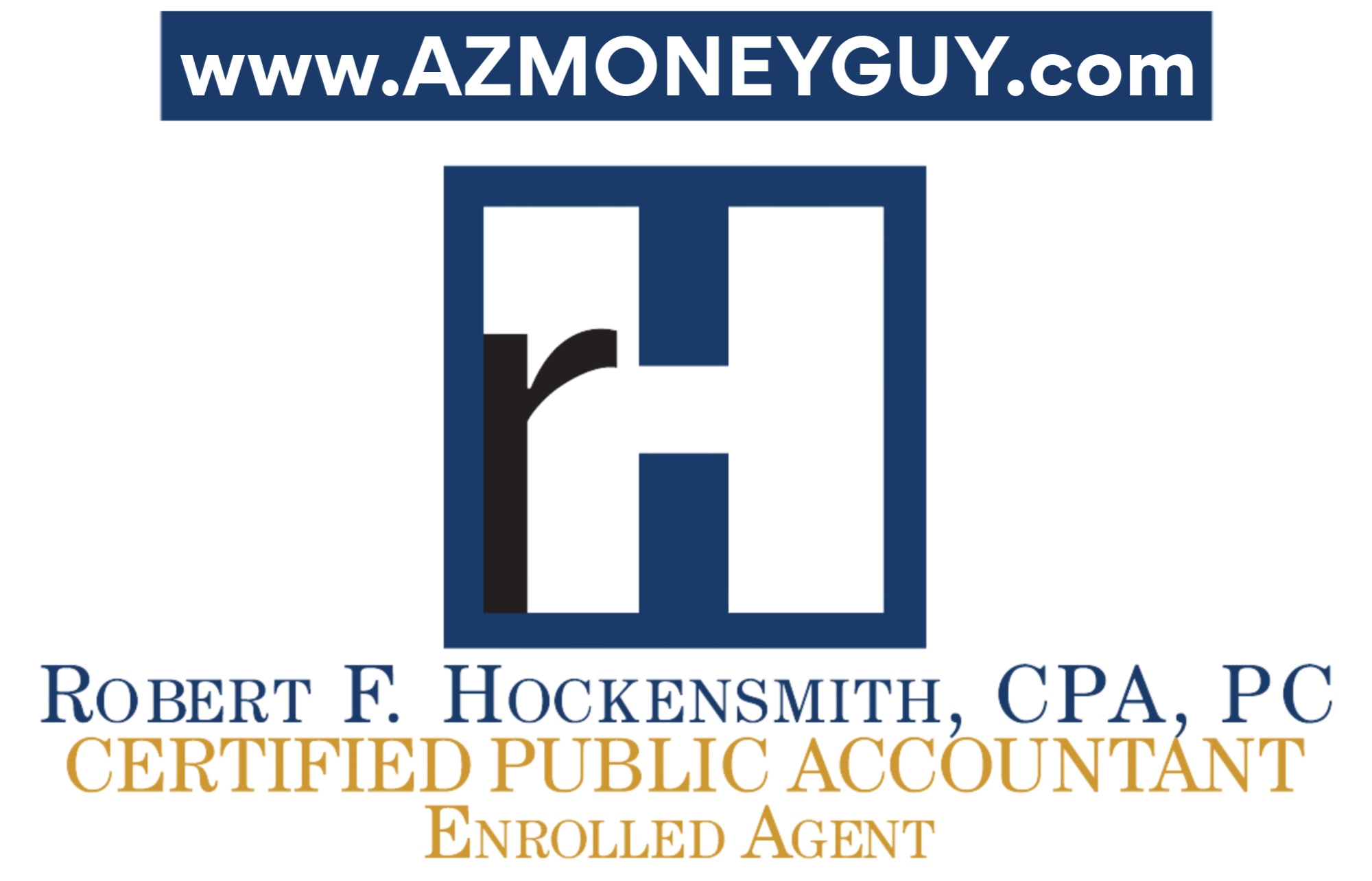Learn how to pass on more of your wealth to your heirs and pay less to the government before it's too late! Click here...
Address & Map
(602) 264 - 9331
CLIENT PORTAL
Address & Map
(602) 264-9331

Retirement Savings Tips and Making IRA Contributions
Who doesn’t aspire for peace of mind during the sunset years? Well, everyone does! We all know that to have a good retirement, you must start saving early in life. Bob and Devin know that saving for retirement will not only help them financially for the future but will also direct them towards helping themselves this year too. Disciplined savers will only get closer toward their retirement dream. So, this week let’s discuss the Retirement Savings programs that encourage taxpayers to save for the future.
You can boost your retirement savings even more this year, thanks to the higher limits on some of the most popular savings’ strategies. Stretch your budget to take maximum advantage of these new limits, especially as studies show most of us save way too little.
Here are some retirement savings plans that are available:
You can defer (save) into your 401k. The deferral or savings also applies to Tax Sheltered Annuities (TSA’s) that are available to teachers, and some government workers. The deferral (savings) limit for Simple (Individual Retirement Accounts) IRA’s is a different amount from the other IRA plans.
Catch up contributions (the extra savings that allows taxpayers to save even more) for those of age 50 and over are available for most retirement plans.
The limit of both retirement savings accounts, and catch-up amounts now change annually, adjusted for inflation. You can find the amounts allowed at www.irs.gov
There is both a Traditional IRA and ROTH IRA, in addition to other retirement savings plans. The limits for both Roth and Traditional IRAs can be found by going to www.IRS.gov or asking your tax professional. Catch up contributions allowed for those 50 and older.
Here are some tips to maximize your retirement savings:
- Contribute enough to at least obtain your employer’s match in a retirement plan.
- Defer as much income as you can each month. Try to max out the upfront contribution giving you bigger take-home pay later. If you reach the age of 50 during the year, remember to factor in your catch-up contribution for that year as you will be allowed to make extra contributions.
- Contribute to an IRA as early in the year as possible to maximize savings.
- You might be entitled to a Retirement Savings Credit, if you contribute to a Retirement Savings Plan. Your tax preparer can help you with that determination. This could lead you to save thousands in taxes.
- Be sure to contribute to some type of Retirement plan each year in order to plan for retirement. There are many types of plans, so be sure to speak to your tax professional to see which one or ones you are eligible for (401K, Solo 401K, SEP-IRA, Simple-IRA, IRS code section 403B (Tax Sheltered Annuity-TSA), IRS code section 457 plans (Deferred Compensation plan), Federal TSP plan (Thrift Savings Plan), Traditional IRA and ROTH IRA.
Making IRA Contributions
If you made IRA contributions or you’re thinking of making them, you may have questions about IRAs and your taxes. Here are some important tips about saving for retirement using an IRA:
- There is no age limit to contribute to an IRA.
- You must have taxable compensation to contribute to an IRA. This includes income from wages and salaries and net self-employment income. It also includes tips, commissions, bonuses and alimony. If you’re married and file a joint return, generally only one spouse needs to have compensation.
- You can contribute to an IRA at any time during the year. To count for this year, you must make all contributions by the due date of your tax return. This does NOT include extensions. That means you usually must contribute by April 15th. If you contribute between Jan. 1 and April 15, make sure your plan sponsor applies it to the right year.
- For example, the most you can contribute to your IRA for 2023 is the smaller of either your taxable compensation for the year or $6,500. If you were age 50 or older at the end of 2023, the maximum you can contribute increases to $7,500.
- You normally won’t pay income tax on funds in your traditional IRA until you start taking distributions from it. Qualified distributions from a Roth IRA are tax-free.
- You may be able to deduct some or all your contributions to your traditional IRA. See your tax professional’s instructions to figure the amount that you can deduct. Unlike a traditional IRA, you can’t deduct contributions to a Roth IRA.
- If you contribute to an IRA, you may also qualify for the Saver’s Credit. The credit can reduce your taxes by thousands of dollars. Use Form 8880, Credit for Qualified Retirement Savings Contributions, to claim the credit.
Inheriting Retirement Accounts (2020 and later)
The new Setting Every Community up for Retirement Enhancement Act (SECURE) changes the way some people will inherit retirement accounts. Before the SECURE Act was passed and signed into law, Dec 29, 2019, you were able to inherit retirement accounts and stretch the amount of time you took to receive the money, so you could pay less taxes over time.
NOW, with the new law, that strategy is much reduced for many people who inherit retirement accounts. New rules require that inherited retirement accounts must be completely distributed to heirs within 10 years of inheriting them! This means no more stretching out the payments and the resulting taxes from the extra income.
There are some exceptions to this, such as:
Inherited accounts prior to 2020
Spouses
Minor Children
Disabled or chronically ill beneficiaries
Heirs not more than 10 years younger than the deceased
Here are some points to remember when trying to save for retirement, and maybe even reduce your taxes:
401K, 403B (TSA), 457 (Deferred Compensation), Thrift Savings Plans (TSP) contribution plans.
Simple IRA and SEP IRA contribution plans.
Catch up for Age 50 and older plans.
Contribute enough to at least obtain your employer’s match. (This always gives you free money)
Consider the Retirement Saver’s Credit. (Ask your tax professional if you qualify for a saver’s credit to reduce your taxes) Find the Annual limits of the retirement savings accounts AND the Catch-Up amounts from your tax professional.
New SECURE act changes how inherited retirement accounts are distributed
Call today, don’t delay! See how this affects you. We can be reached at 602-264-9331 and on all social media under azmoneyguy.
Related Blog Posts
Weddings, Marriage and Taxes
Learn how to pass on more of your wealth to your heirs and pay less to the government before it's too late! Click here...Address & Map(602) 264 - 9331CLIENT PORTALAddress & Map(602) 264-9331[DISPLAY_ULTIMATE_SOCIAL_ICONS] It’s that time of the year when many...
High School Students, College Students, Graduates and Taxes
Learn how to pass on more of your wealth to your heirs and pay less to the government before it's too late! Click here...Address & Map(602) 264 - 9331CLIENT PORTALAddress & Map(602) 264-9331[DISPLAY_ULTIMATE_SOCIAL_ICONS] The summer internship with a financial...
Fear of Filing Tax Returns and Unclaimed Tax Refunds
Learn how to pass on more of your wealth to your heirs and pay less to the government before it's too late! Click here...Address & Map(602) 264 - 9331CLIENT PORTALAddress & Map(602) 264-9331[DISPLAY_ULTIMATE_SOCIAL_ICONS] Organizing documents, keeping them in...
Do You Owe The IRS?
Learn 5 Secrets The IRS Doesn’t Want You To Know.
Click on the button below to get FREE access to this exclusive content.
Get Expert Tax Advice from an expert
Mr. Hockensmith has been a guest newscaster for national and local TV stations in Phoenix since 1995, broadcasting financial and tax topics to the general pubic. He has written tax and accounting articles for both national and local newspapers and professional journals. He has been a public speaker nationally and locally on tax, accounting, financial planning and economics since 1992. He was a Disaster Reservist at the Federal Emergency Management Agency, for many years after his military service. He served as a Colonel with the US Army, retiring from military service after 36 years in 2008. Early in his accounting career, he was a Accountant and Consultant with Arthur Andersen CPA’s and Ernst & Young CPA’s.









